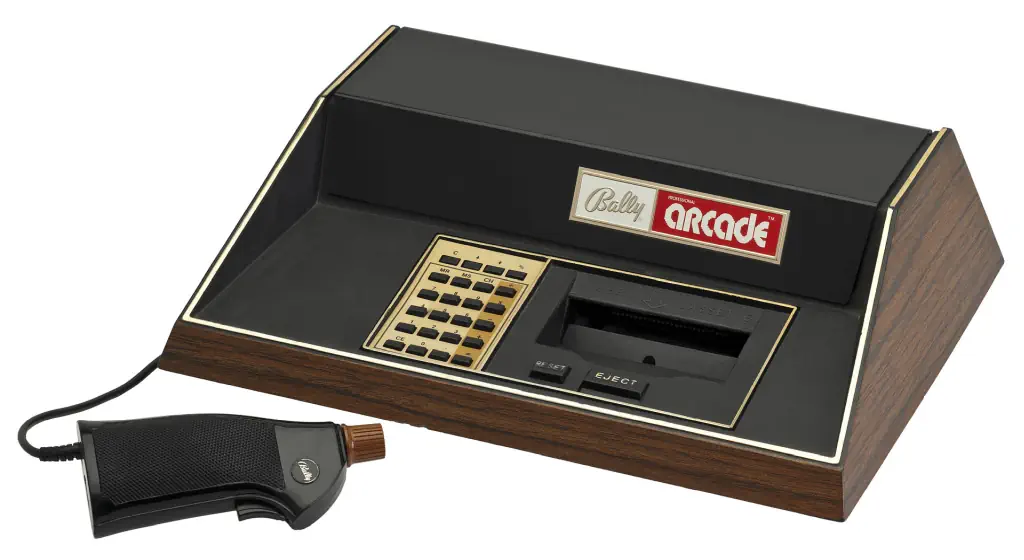Bally Astrocade or Bally ABA-1000
The Bally Astrocade was a system powered by a Zilog Z80 that drove a display chip. The two chips had a RAM buffer inbetween them. The display chip had two modes, a low resolution mode of 106x102 and a high resolution mode of 320x204. Both resolutions used 2 bits for color that could be used out of a palette of 256 colors. RAM was not fast enough at the time for display, so the Z80 would push 1 line at a time to the buffer, so the display chip could read it out to the screen at a different itnerval. Due to this, the hi-resolution mode was not configured in the Bally Astrocade.
The console did not have hardware sprites, but it did have a blitter system and software to drive it. The screen would take up about 4080 bytes of memory, leaving only 16 bytes for score keeping and game options. The programs itself were entirely reliant on the ROM cartridge.
Colors were displayed using color registers that could be picked from a 256 color palette. Changing the registers on the fly could be used for color animation, and an additional set of 4 colors could be swapped in on the horizontal blanking interrupt that programmers used to display 8 colors at the same time.
The cartridges had the size and shape of audio cassettes and were called Videocades. The console also had two built in games, a calculator and a "scribbling" type of drawing application. The controllers were shaped like a hand-grip with a twisting knob on the top, and a trigger-like button on the grip part. The knob had a dual function. In addition to the rotation function, to be used as a paddle, it also was a 8-way joystick. The unit itself had a 24-key hexadecimal key-pad that could be used to operate the built-in calculator or select games. The rear of the console contained a storage space for up to 15 "videocades".
The Astrocade also included a BASIC programming language cartridge. Due to the fact that the display took up so much of the available 4kB Memory, the program would be stored in the video RAM itself. BASIC would use all the even-numbered bits, and the display would use the odd-numbered bits in memory. The interpreter would read out two bytes, drop the odd-numbered bits and assemble the result into a single byte of code. By setting two of the colors in the color registers to the same color, the effect was not visible on the screen. By using less lines on the screen another piece of memory was gained, giving BASIC a whoping 1760 bytes of RAM to work with. Programs were entered using the keypad which was cumbersome, but functional.
The Bally Astrocade was intially announced as the Bally Home Library Computer and was released onto the market in 1978. It was sold until 1984. The machine was powerful, had great graphics for its time, but was notoriously difficlult to use.
RAM max: 64kB
ROM: 8kB
Ram expansion using external module Sound Chip 3 oscillators Sound 3 oscillators with noise mixing, vibrato Display Chip Proprietary Display 160x102 4 out of 256 colors Best Color 4 out of 256 Best Graphics 160X102 Sprites none System OS Proprietary Storage ROM cartridge Original Price $299

